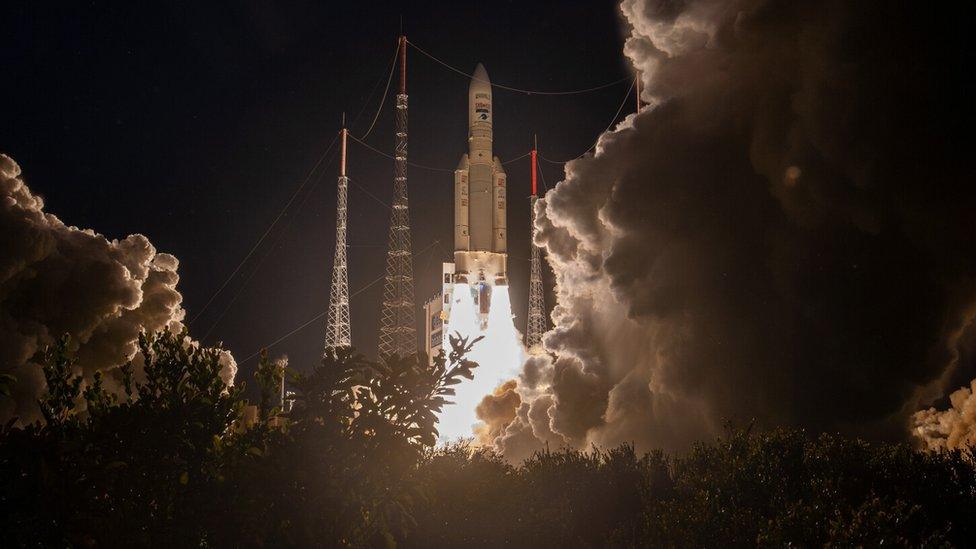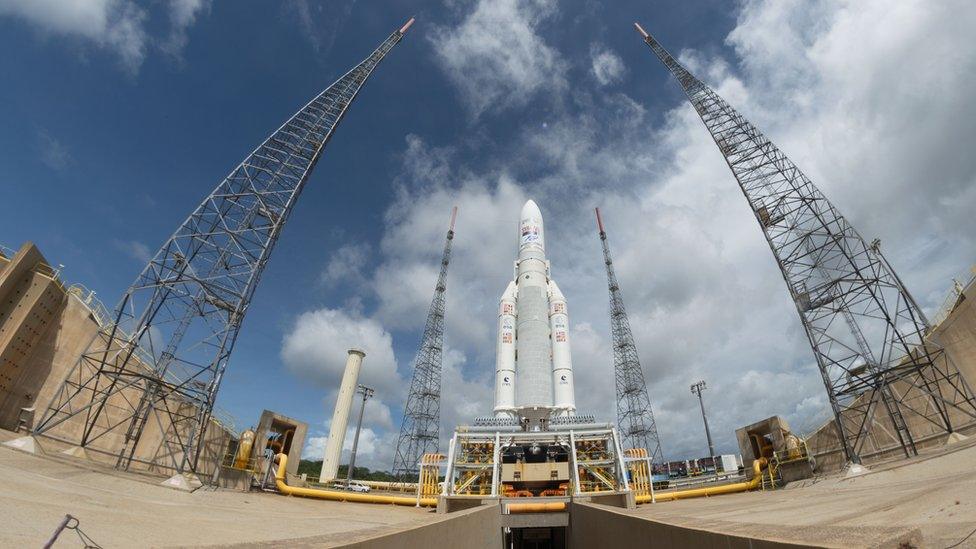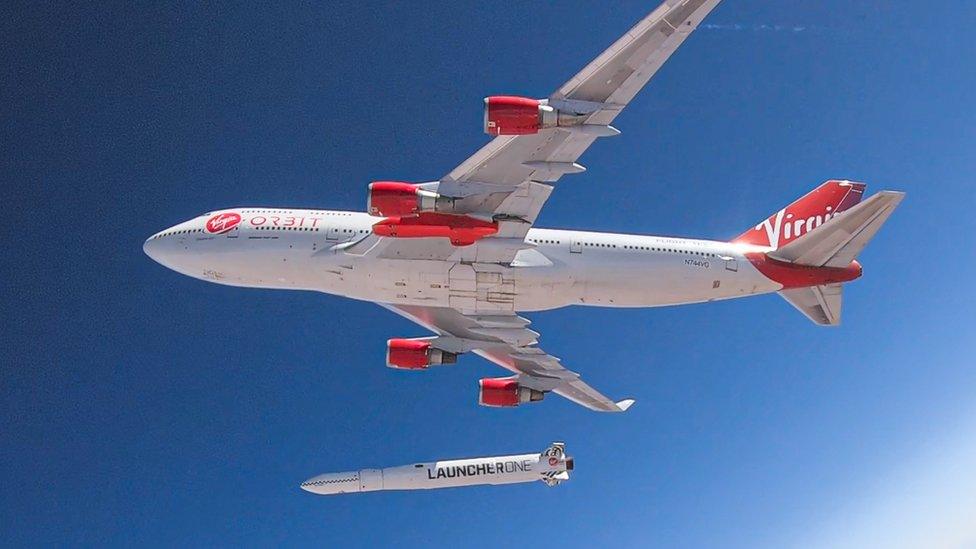Ariane-5: Heavy rocket blasts off into space for the last time
- Published
- comments
Watch: Europe’s last Ariane-5 rocket blasts off
So long Ariane-5! The Ariane-5 rocket has blasted off into space for the final time.
The European heavy-lift rocket has been launching things like satellites and telescopes into orbit around Earth since 1996.
Ariane-5's final mission involved taking two telecoms satellites into space.
But, scientists are now having to figure out what to use whilst they wait for the Ariane-6 rocket to be completed.
What did the Ariane-5 rocket do?

One last time: Ariane-5 rockets have taken almost 1,000 tons of satellite hardware into space
Engineers first created Ariane-5 in the 1980s with the aim of using it to launch a shuttle into space for astronauts.
However, it was decided that would be too expensive, so in 1996 the rocket was given the job of launching satellites.
Ariane-5 went on to complete 117 missions, launching more than 230 satellites into orbit.

Artwork: There was a plan for Ariane-5 to launch an astronaut shuttle
One of Ariane-5's most famous missions was the launch of the massive James Webb Telescope in 2021.
The mission was so accurate and successful that scientists didn't have to use any of the telescope's own fuel to make sure it was in the right place, meaning that it could keep running for double the amount of time.
Ariane-5 also launched the comet-chasing satellite Rosetta in 2004; and the Jupiter Icy Moons Explorer 'Juice' in 2023.

The European Space Agency's director general Dr Josef Aschbacher said that Ariane-5 would be remembered as a remarkable vehicle.
"The performance and the accuracy of the Ariane-5 has been quite unique, but I'm convinced that Ariane-6 will have the same performance and the same accuracy once it's on the launch pad," he said.
The next-generation rocket, the Ariane-6, is still going through a development and testing phase and it is hoped it will be able to start going on missions next year.
- Published9 January 2023

- Published16 November 2022

